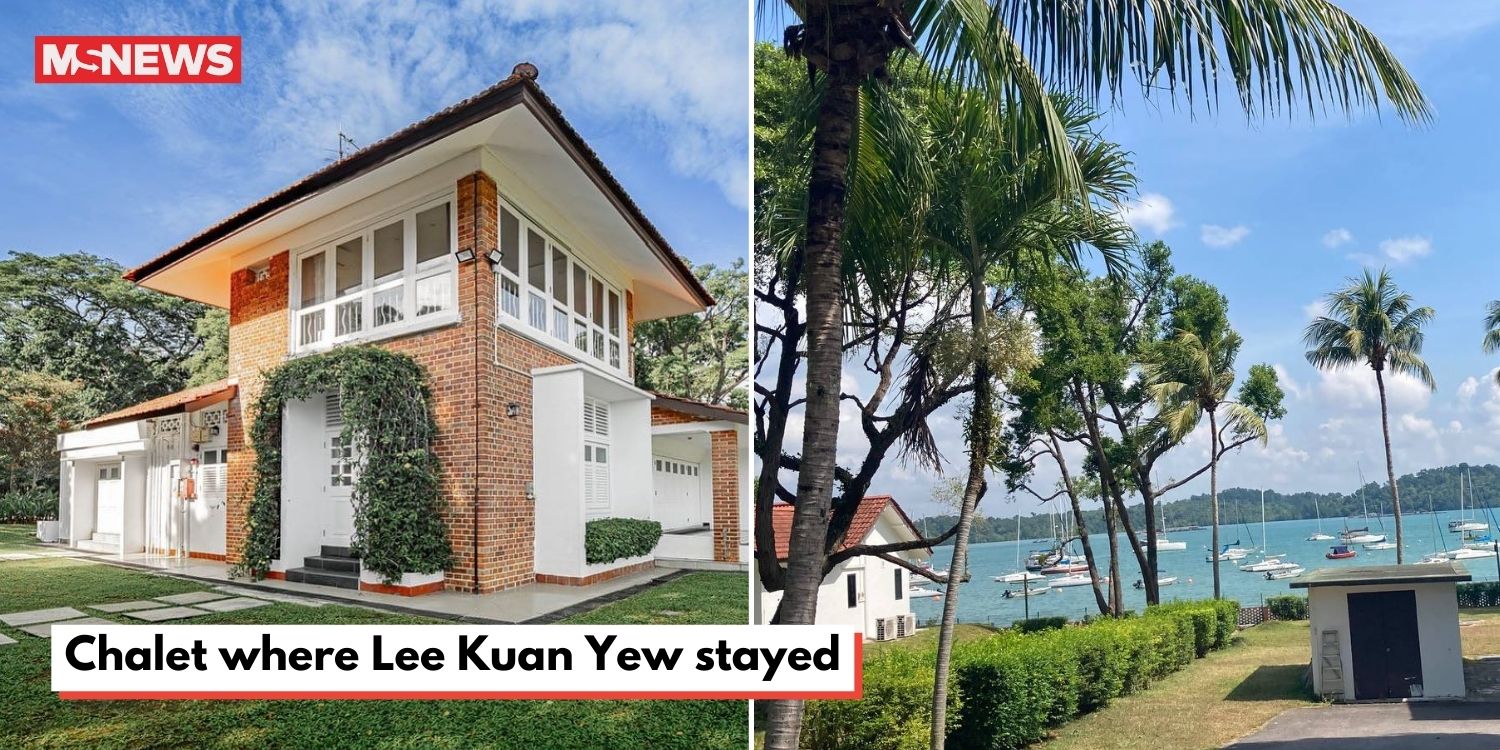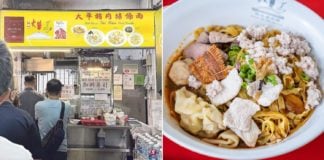Visit these places in Changi & learn more about its untold history
Search “Changi” on Google and you’ll find page after page of Singapore’s national treasure — Changi Airport — the Jewel of the East.
The world-renowned airport has topped countless lists, and most recently, it was ranked the fifth most luxurious airport in the world.
Dig deeper into the area and you’ll find that Changi has more to offer besides the air-conditioned oases of the airport’s terminals and malls.
For example, did you know that one of the chalets was the hot spot for politicians like the late Lee Kuan Yew?
With picturesque views of the sea and buildings rich in history, Singapore’s Far East may be more intriguing than you think.
1. Changi Cottage: Where LKY spent his time after the 1965 Separation
On 9 August 1965, Singapore gained independence by separating from Malaysia.
The late Lee Kuan Yew, then Singapore’s Prime Minister, had delivered a tearful address to reporters and the public. During his speech, he said:
“For me, it is a moment of anguish because all my life… you see, the whole of my adult life… I have believed in Malaysian merger and the unity of these two territories”.
Here’s what they didn’t teach in history class.
After the stressful event, Lee found solace at a chalet in Changi where he recuperated and worked for a few months, reported The Straits Times (ST).
This special chalet is called Changi Cottage, which according to Roots.sg, was built in 1950 at a cost of around S$23,000. It’s also believed that important meetings happened at the chalet.
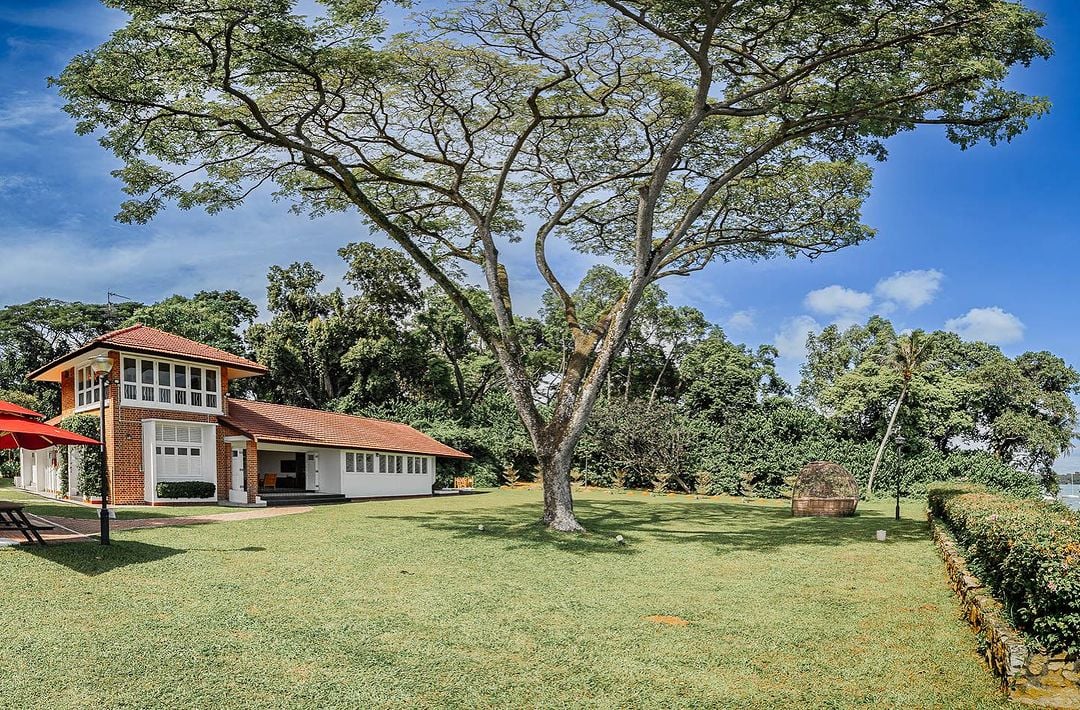
Source: @civilserviceclub on Instagram
But Lee was not the only distinguished guest at the cottage.
In January 1971, for example, a report by ST noted that British Foreign Secretary, Sir Alec Douglas-Home and his wife, stayed at the seaside residence.
Singapore’s first president, Yusof Ishak, also entertained guests there.
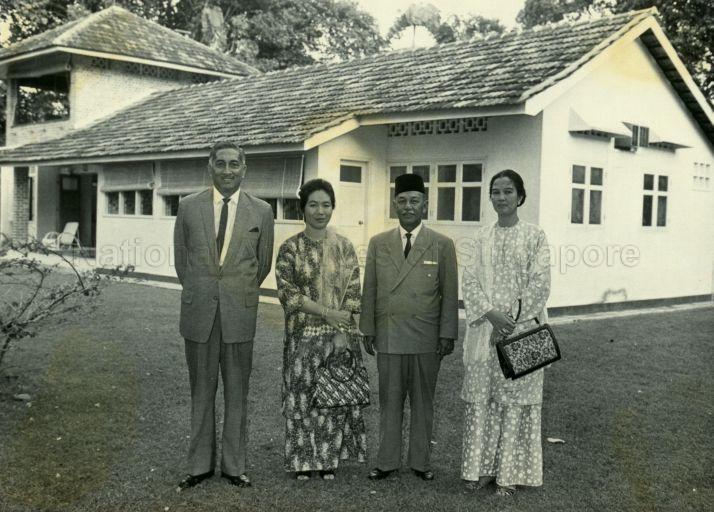
Source: National Archives of Singapore
With its scenic views, the three-bedroom building is now a part of the Civil Service Club and a popular spot for intimate weddings.
The chalet is also air-conditioned with sheltered barbecue pits and a fully equipped kitchen.
The damage for a one-night stay? At least S$517 dollars, depending on the season.
Meanwhile, those content with looking at the cottage from the outside can follow these directions.
Changi Cottage @ 26 Netheravon Road
Address: 26 Netheravon Road, Singapore 508523
Bus services: 29 (Changi Golf Club)
Do note that entrance into the property is only for guests with bookings.
2. Sree Ramar temple: A Hindu temple with Guanyin & Buddha statues
Just a 12-minute walk away from Changi Cottage is the Sree Ramar temple.
Located at the junction of Loyang Avenue and Changi Village Road, the Hindu temple has served the community since 1946.

Source: Roots.sg
67-year-old K V Thalapathy, who grew up in Changi Village in the 1960s and 1970s, recalls visiting the temple every weekend morning as a young boy.
He candidly noted that he dreaded waking up early — until he discovered the temple’s delicious chickpeas.
Back then, Mr Thalapathy shared, the temple served snacks to children and the devotees. This was enough to motivate him every weekend.
“Before my father gives me a kick, I’m here already,” quipped the retiree, who has been volunteering at the temple for 20 years.

As the years went on, Sree Ramar temple became the spot for worshippers from all over Singapore’s East — including Tampines, Pasir Ris, and Simei.
Not only that, the temple also caters to non-Hindu devotees.
Tucked under a tree at the temple’s entrance are two statues of Guanyin and Buddha, which was introduced sometime in 2005 during the temple’s facelift, noted Mr Thalapathy.
According to the temple’s website, the statues were set up for the non-Hindu devotees who also frequent the temple. Here’s how you can get there:
Sree Ramar Temple
Address: 51 Changi Village Road, Singapore 509908
Opening hours: 6am – 12pm, 5.30pm – 9pm (daily)
Bus services: 2, 2B, 9, 19, 59, 89, 109 (Changi Golf Course)
3. Changi Prison: Visit the original prison entrance & wall from 1936
The East is also home to Changi Prison, now interestingly located near upscale residential areas.
If you look out the window of one of the public buses that pass by the complex, you’ll spot swanky condominiums and the retail stores of KOMO Shoppes — Changi’s “lifestyle hub” that opened in 2023.
Head a bit further down the road though, and you’ll find remnants of the original Changi Prison wall.
The Changi Prison was completed in 1936 by the British colonial government and its two main buildings could hold 600 people combined.
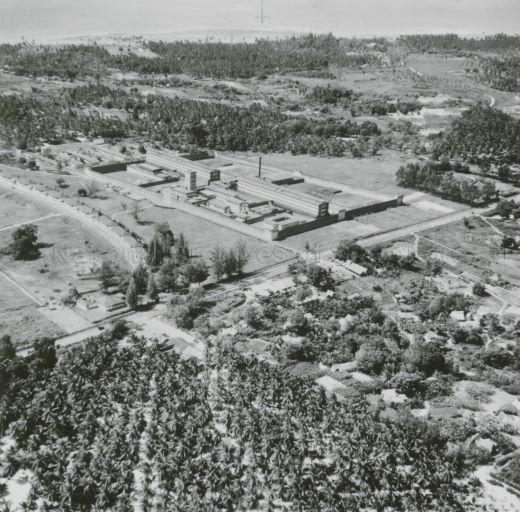
Source: National Archives of Singapore
The old prison was then redeveloped at the turn of the 21st century, and while most of it was demolished in 2004, some parts survived.
These include a 180-metre stretch of the original prison wall, its entrance gate, and two towers.
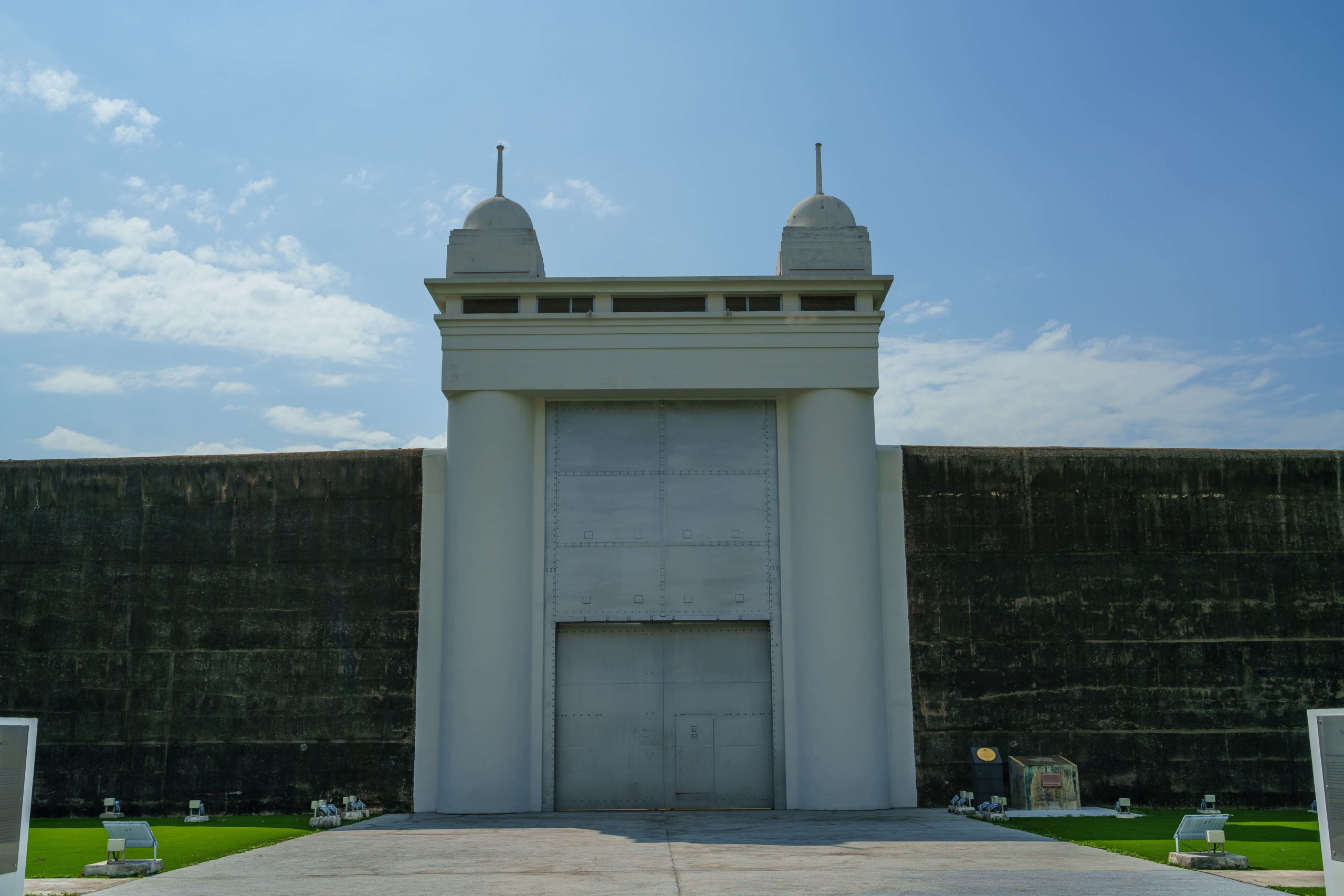
Source: Roots
Fun fact: These were gazetted as a National Monument in 2016.
To see these relics of Singapore’s past in Changi, visit the following address:
Changi Prison
Address: 982 Upper Changi Road North, Singapore 507709
Bus services: 2, 2B, 4 (Changi Prison)
4. Changi Beach: Stories of the coast
Dubbed “one of the oldest coastal parks in Singapore” by NParks, Changi Beach might be the most underrated of them all.
The beach was a popular day-trip destination for colonial administration in the 19th century and early 20th century.
However, according to the companion guide for the Changi Heritage Trail, throngs of locals started coming on the weekends during the 1950s.
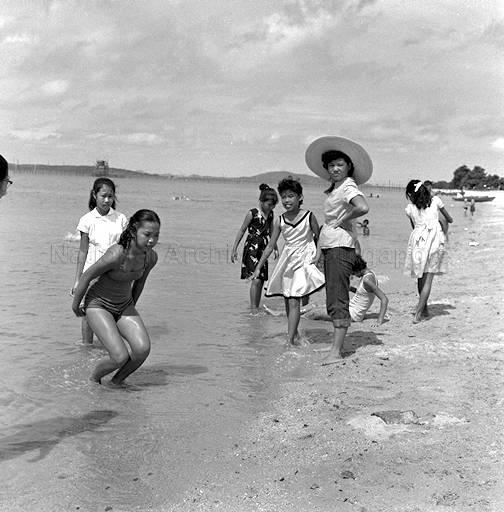
Source: National Archives of Singapore
This was due to the improvement of Singapore’s infrastructure — particularly the construction of Nicoll Drive.
The road connected Tanah Merah with Changi Village and led to a surge in visitors.
Changi Beach would continue to be popular among locals until the 1970s.
In a report published on 9 September 1975, New Nation dubbed that beach “Singapore’s top picnic site”.
By this time, however, parts of Changi Beach were closed for reclamation works and the development of Changi Airport.
The area was acquired by the Singapore Government in 1975, reported New Nation.
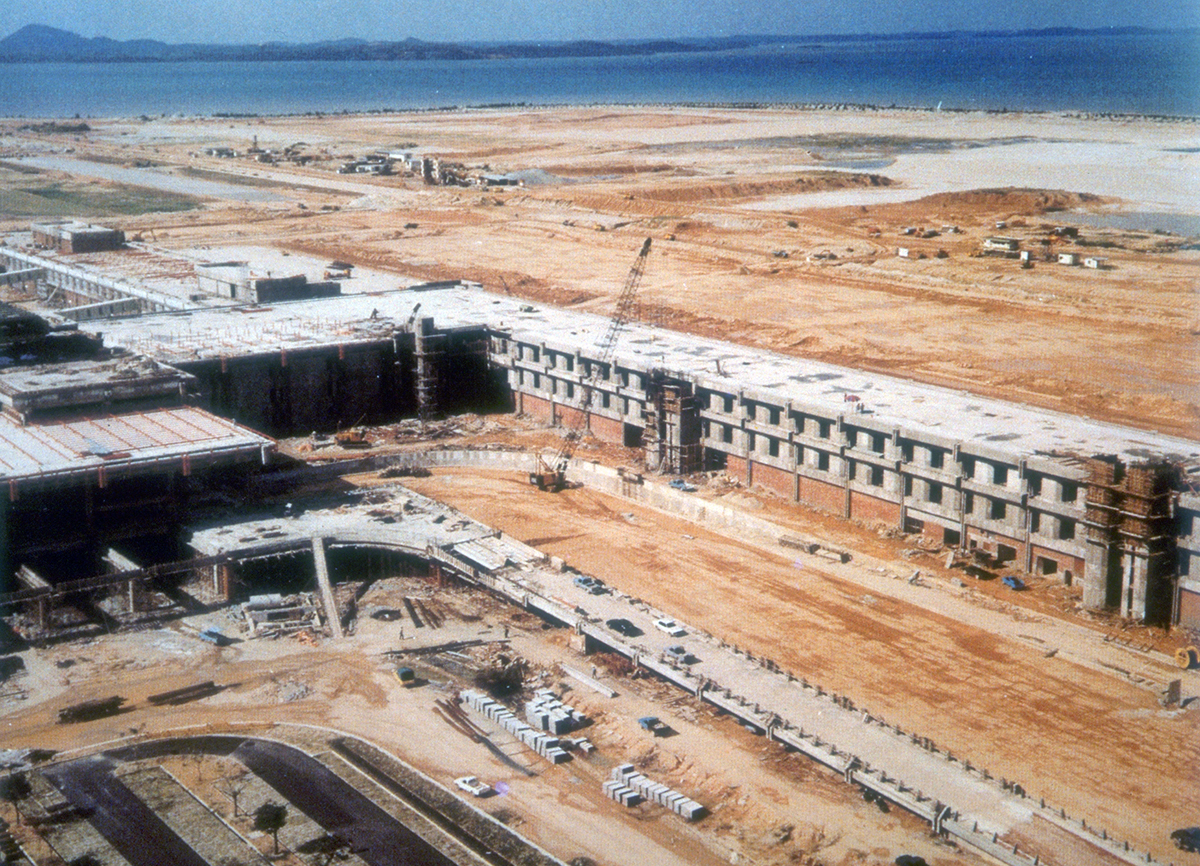
Source: Biblioasia
Some villages, such as Kampong Ayer Gemuroh, were also demolished to make way for this development.
Madam Isiah Majid was 14 years old when her family relocated to Marine Parade in 1974.
She said that she will always remember waiting by the water for her father, who was a part-time fisherman, to come home with his catch.
Mdm Isiah spent so much time by the coast that she knew the boats and the fishermen by heart.
“Even from far we can tell who’s coming,” recalled the 62-year-old.
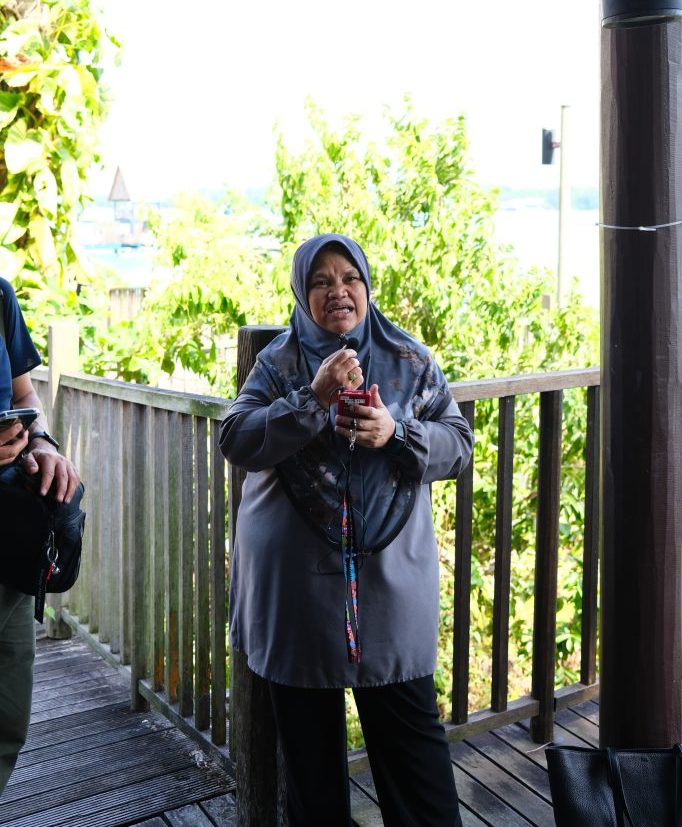
Source: The Little Big Red Dot
Even though her childhood home no longer exists, Mdm Isiah holds tight to the happy and carefree memories of her youth.
She has even published a book about traditional kampung games titled ‘Permainan Anak Kampung’ (The Games of the Kampung Children).
Visit all these & more on the Changi Heritage Trail
If you were to visit Changi now, you’d notice a slower tempo compared to the bustle of Singapore’s central heartlands.
Its old beaches have witnessed many scenes, from the jovial celebrations of beachgoers to the tragic days of the Sook Ching massacres.
The newly minted Changi Heritage Trail features all these histories and more.
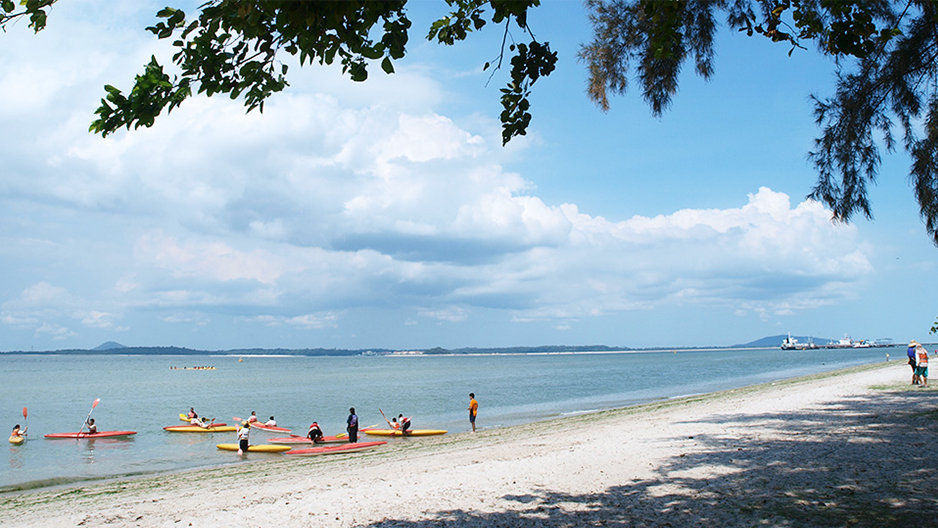
Source: NParks
With 23 heritage sites and six heritage trail markers, the self-guided trail covers the diverse stories of Changi’s past.
If this sounds like something up your alley, find out about more hidden gems and untold histories on the Roots SG website here.
Also read: I spent an afternoon in Geylang with a migrant worker, here’s how it went
I spent an afternoon in Geylang with a migrant worker, here’s how it went
Have news you must share? Get in touch with us via email at news@mustsharenews.com.
Featured image adapted from @civilserviceclub on Instagram and by MS News.

Drop us your email so you won't miss the latest news.
